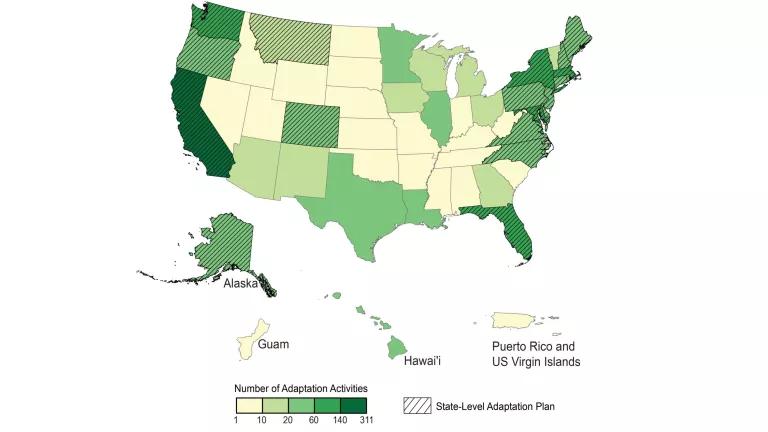
India’s Indian Meteorological Department (IMD) is predicting April 2017 to be one degree hotter than normal. According to the IMD outlook, above normal temperatures are likely over most parts of the India during February, March and April 2017. With climate change, rising temperatures and every year since 2014 recording hotter temperatures than before, above normal forecasts have become more frequent in the last decade, especially in tropically situated countries of South Asia. Recognizing this trend, Indian national authorities and organizations such as the Indian Meteorological Department (IMD), Indian Meteorological Society (IMS) and the National Disaster Management Authority (NDMA) are taking leadership to facilitate greater awareness and state-level capacity building to integrate extreme heat resilience planning into the disaster plans at the subnational levels. NRDC and its partners, the Indian Institute of Public Health (IIPH), Gandhinagar, worked with the city of Ahmedabad to pilot South Asia’s first ever, extreme heat early warning system—the Heat Action Plan—and are now supporting national and state level agencies in scaling these systems.
As part of this effort, I presented on international best practices and recommendations for building heat resilience as part of the “Regional Workshop on Heat Wave Risk Reduction”, jointly organized by the NDMA and the Government of Telangana in Hyderabad last week. Telangana, situated in Southern India, experienced some of the highest heat-related deaths in the devastating heat wave of May 2015, along with the states of Andhra Pradesh and Odisha. The 2015 heat wave sent city officials grappling to find ways to better protect and prepare residents from the scorching temperatures. Since then, with the support of NRDC and partners, the Heat Action Plan has scaled to 11 cities across India, with an increasing interest from key states to scale the plan in 2017.
What can states do to protect communities from extreme heat?
Implement Heat Action Plans in high priority areas
Heat Action Plans, based on robust scientific research, build public awareness of the risks of extreme heat, train medical and community workers to prevent and respond to heat-related illnesses, and coordinate an interagency emergency response effort when heat waves hit. So far, these strategies were carried out at the city level across India. For scaling to the state level, it is important to recognize that while some elements of the Heat Action Plan, such as community awareness messaging to keep cool, can be easily adapted and scaled given the similarities across regions, other elements such as temperature thresholds for the early warning system need to be locally developed for priority regions within each state.
Augment city level infrastructure to provide access to affordable cooling

Research has shown that urban slum dwellers and outdoor workers are particularly vulnerable to heat. Tin-roofed slum shelters that become exceedingly hot during the summer, can pose grave dangers for those who don’t have access to cooling appliances such as as water-coolers or air-conditioners. Cool-roofs are an affordable solution to reduce indoor temperatures and have proven to be effective across 90 percent of India with very high scope to reduce temperatures in both, new and retrofitted buildings. The city of New York initiated a cool-roofs program in 2009 with a target to convert 1 million square feet of roofs annually. The program provides affordable cooling, while providing local jobs and increasing community awareness of extreme heat protection. NRDC and partners IIPH Gandhinagar and the Administrative Staff College of India (ASCI) are working with Ahmedabad, Nagpur and Hyderabad on a cool-roofs program to provide access to cooling for those who are most vulnerable to the health impacts of extreme heat.
With climate change fuelling more intense and frequent heat waves in India, a new scale of coordinated action is essential to protect communities, especially their most vulnerable members. As India gears up for another searing summer in 2017, state-level Heat Action Plans provide an opportunity for cities and states to take leadership in building heat-resilience in India and work with the National Disaster Management Authority and the Indian Meteorological Department to protect millions who may suffer from the dangerous health effects of extreme heat.



